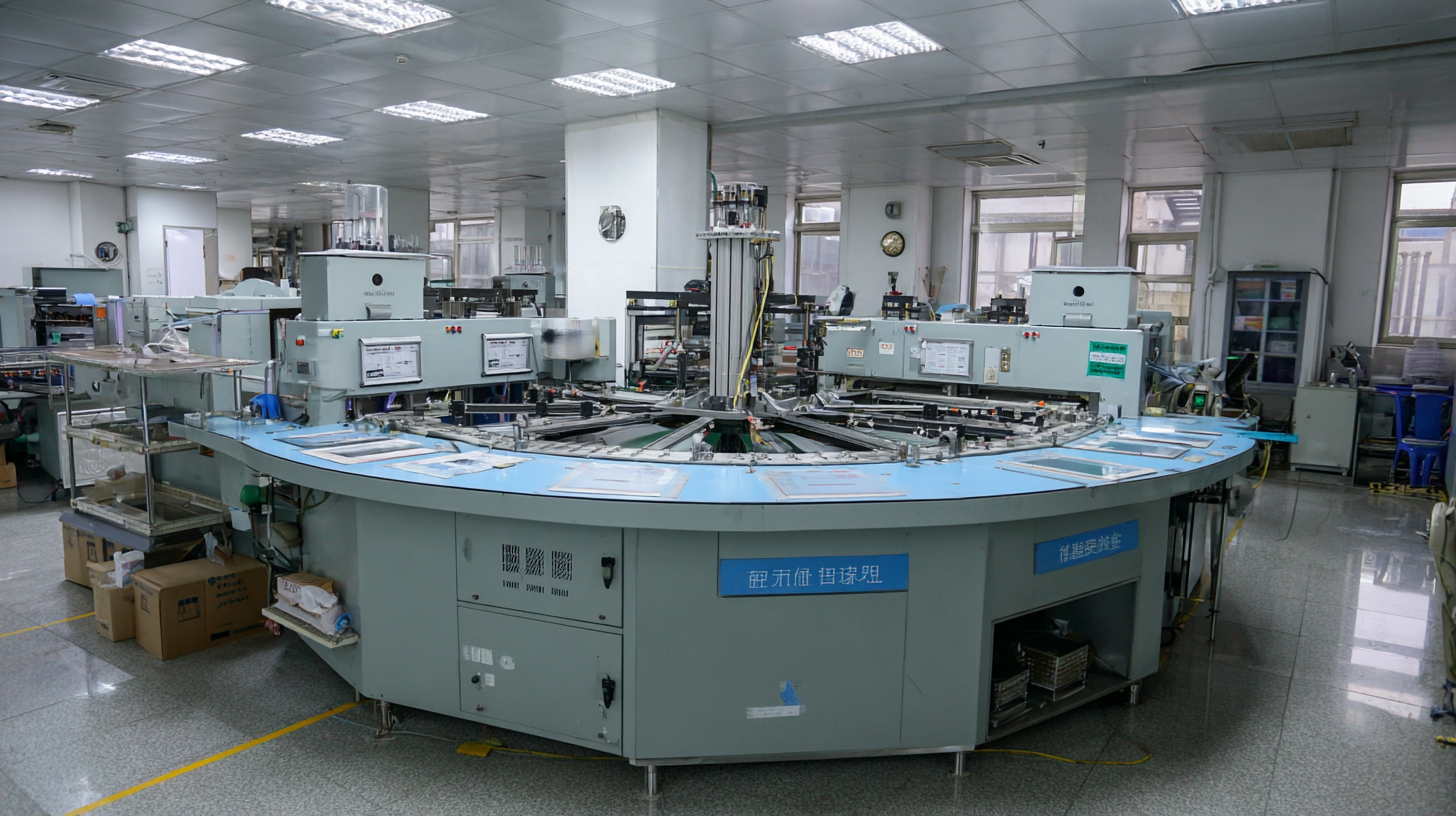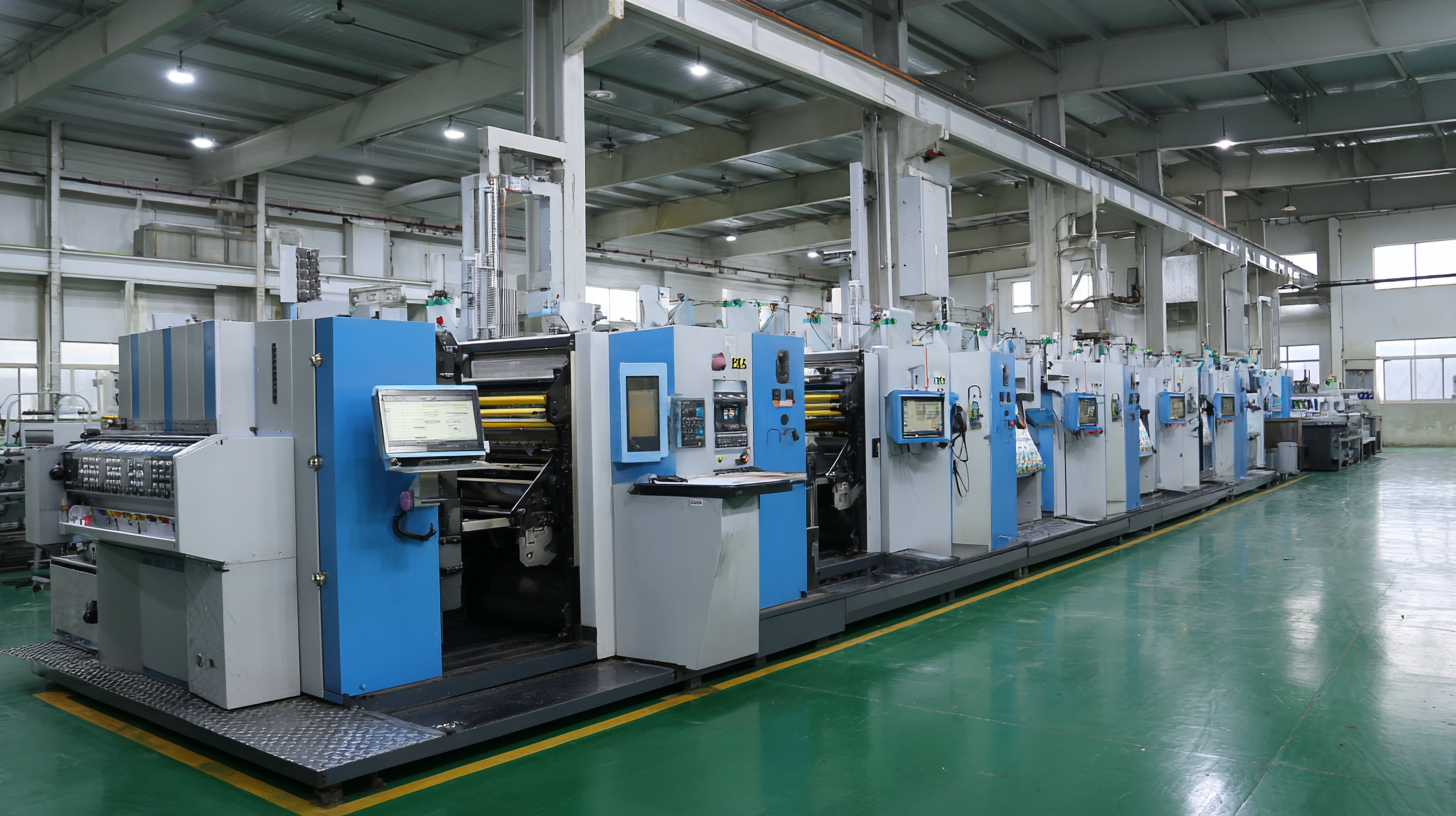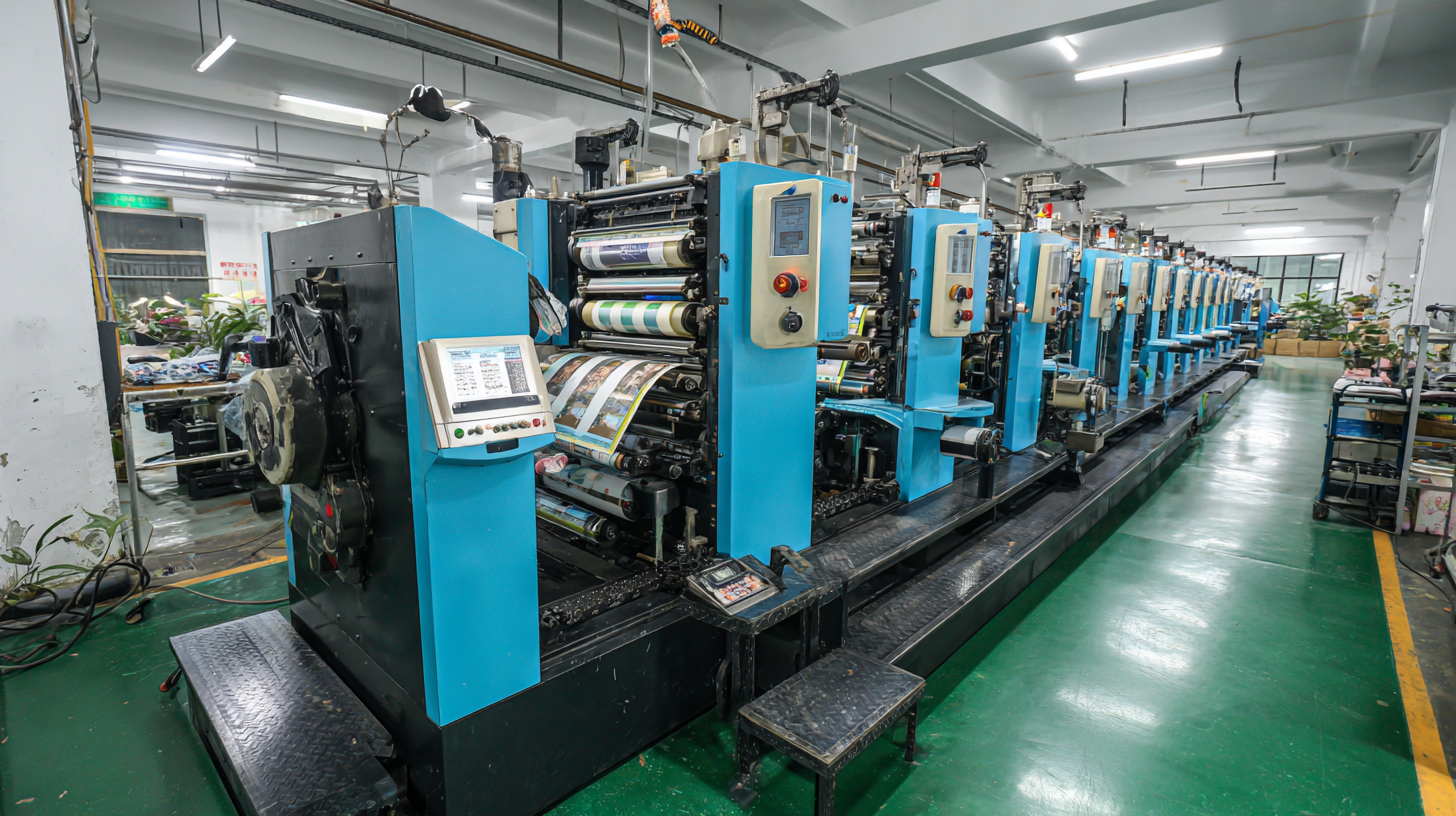In recent years, the demand for efficient and high-quality printing solutions has surged, particularly with the rise of custom packaging and promotional products. The oval printing machine has emerged as a key player in this transformation, enabling manufacturers to produce vibrant and intricate designs on a variety of surfaces. According to recent industry reports, the global printing machinery market is projected to reach $480 billion by 2025, with segment growth driven by technological innovations and advancements in printing techniques.

Leading Chinese manufacturers are at the forefront, leveraging cutting-edge technology to enhance the capabilities of oval printing machines. These machines not only improve production speed but also offer superior print quality, catering to the evolving needs of businesses across sectors. As we explore these innovations and the future trends shaping the industry, it's essential to understand the alternatives available and how they compare within the competitive landscape of printing technologies.
The quality of oval printing machines has significantly improved, thanks to advanced technology and manufacturing processes employed by leading Chinese manufacturers. Key features of these machines include high-speed printing capabilities, precise color reproduction, and versatility in handling various materials. According to a report by MarketsandMarkets, the global digital printing market is projected to grow from $25.8 billion in 2021 to $42.3 billion by 2026, highlighting the increasing demand for efficient and versatile printing solutions. Oval printing machines from China are at the forefront of this trend, offering innovative designs that cater to a wide range of industrial applications.
One of the standout features of top-tier oval printing machines is their automation capabilities, which streamline the printing process and reduce labor costs. For instance, many units come equipped with automatic registration systems that ensure tight tolerances and consistent output. Additionally, with the incorporation of eco-friendly inks and energy-efficient operating systems, these machines align with the growing emphasis on sustainability in manufacturing. As per a study by ResearchAndMarkets, the shift towards sustainable printing practices is expected to boost the demand for advanced printing technologies, further solidifying China's position as a leading provider in this field.
In the realm of printing technology, oval printing machines have undergone significant transformations, driven by advanced technologies that enhance precision, speed, and usability. According to a report by Smithers Pira, the global digital printing market is projected to reach $27.2 billion by 2024, with innovative solutions like oval printing taking center stage. These machines leverage cutting-edge features such as Inkjets and laser technology, which allow for intricate designs and vibrant color reproduction on various substrates.
Leading Chinese manufacturers are at the forefront of this innovation, integrating smart technologies such as IoT connectivity and automated controls. A recent survey by MarketsandMarkets indicates that the adoption of automation in printing processes can boost efficiency by up to 30%, allowing for quicker turnarounds without compromising quality. As these manufacturers invest in R&D, they not only improve the functional aspects of oval printing machines but also ensure they meet eco-friendly standards, responding to the industry's growing focus on sustainability. This convergence of technology and environmental responsibility positions oval printing machines as a crucial choice for businesses seeking to optimize their printing capabilities.
| Model | Max Print Size (mm) | Print Speed (pcs/hr) | Ink Type | Technology | Features |
|---|---|---|---|---|---|
| Model A | 600 x 400 | 1200 | Solvent | Hybrid | Automatic Color Adjustment |
| Model B | 800 x 600 | 1000 | UV | Digital | Touchscreen Interface |
| Model C | 500 x 300 | 1500 | Eco-solvent | Inkjet | High Precision Print Heads |
| Model D | 700 x 500 | 900 | Water-based | Screen Printing | Multi-color Capability |
| Model E | 900 x 700 | 1100 | Latex | 4D Printing | Energy Efficient |
When selecting the right oval printing machine, several essential factors must be considered to ensure high-quality printing and operational efficiency. Firstly, the machine’s print speed is crucial; industry reports indicate that high-performance oval printers can reach speeds of up to 1,500 pieces per hour, dramatically increasing production capabilities for businesses. Additionally, the machine's versatility to handle various materials—such as plastics, metal, and glass—enhances its utility in diverse printing applications.
Tip: Always check the machine’s compatibility with the ink types used in your processes. The wrong ink can lead to poor adhesion and fading, compromising print quality.
Another vital factor is the machine's ease of operation and maintenance. Advanced oval printing machines often come equipped with user-friendly interfaces and automated features that minimize downtime. According to a recent survey, businesses that upgraded to automated printing solutions saw a 30% reduction in maintenance costs over three years. This speaks to the importance of investing in leading technologies that not only enhance operational efficiency but also provide long-term savings.
Tip: Consider investing in machines from reputable manufacturers that offer robust technical support and training, which can further reduce operational hiccups and ensure optimal performance.

In the competitive landscape of oval printing machines, various brands vie for dominance, each offering unique features and benefits. A comparative analysis reveals that leading Chinese manufacturers not only prioritize quality but also incorporate advanced technologies in their designs. Companies like Zhejiang Yongxin and Wenzhou Haitian have garnered attention for their innovative approaches, integrating user-friendly interfaces and energy-efficient mechanisms in their machines. This focus on modernization not only enhances printing precision but also reduces operational costs, making these brands highly appealing to businesses seeking reliability and efficiency.
Moreover, the durability and performance of these machines vary among brands, influenced by the materials used and the manufacturing processes. For instance, some brands offer robust models designed for high-volume printing, while others are tailored for smaller operations, emphasizing versatility and ease of maintenance. Customer feedback plays a crucial role in this evaluation, with many users highlighting brands that offer exemplary after-sales support and comprehensive warranties. As the market evolves, understanding these distinctions will aid businesses in selecting the ideal oval printing machine that meets their specific needs and bolsters their productivity.
This bar chart illustrates the comparative performance metrics of various oval printing machines available in the market. The data represents their printing speed, print quality, and durability ratings.
As we look toward 2025, the world of oval printing technology is poised for significant transformation, influenced by evolving consumer trends in China. According to industry reports, consumers are expected to navigate between a sense of control and a feeling of chaos as they engage with products and brands. This duality will drive demand for printing solutions that not only meet high standards of personalization but also ensure sustainability and efficiency. Key trends suggest that brands will leverage advanced technologies to create packaging that resonates with eco-conscious consumers, ultimately enhancing user experience.
Furthermore, with insights from market analysts, it’s projected that by 2025, the adoption of generative AI will become commonplace across various industries, including manufacturing and printing. The integration of AI is anticipated to optimize production processes and reduce waste, aligning with consumer expectations for responsible consumption. As outlined in research findings, companies investing in AI and innovative printing technologies could see a significant increase in market share, as consumers increasingly favor brands that innovate while aligning with their values. This landscape highlights the critical interplay between technological advancements and consumer preferences shaping the future of oval printing.

